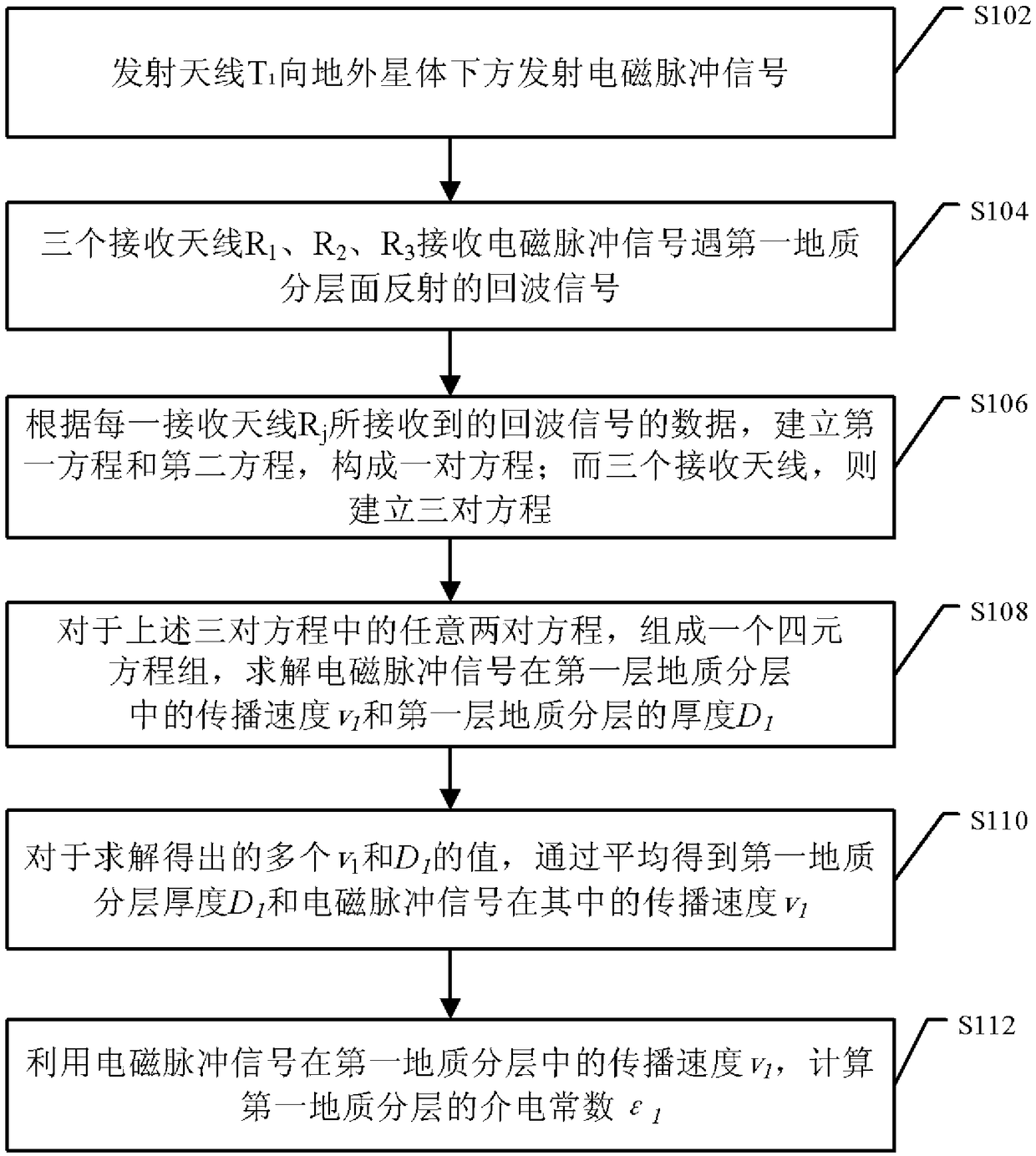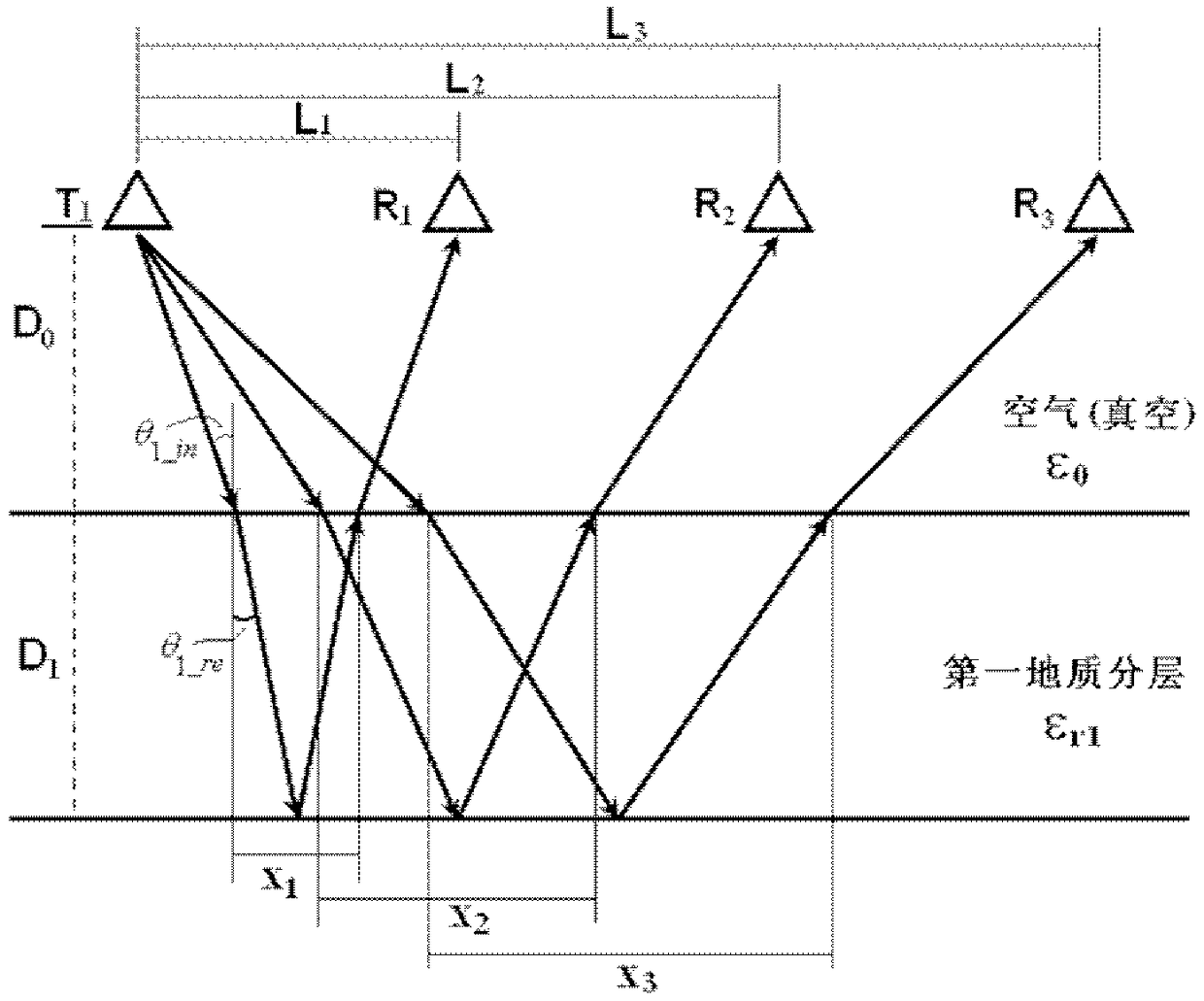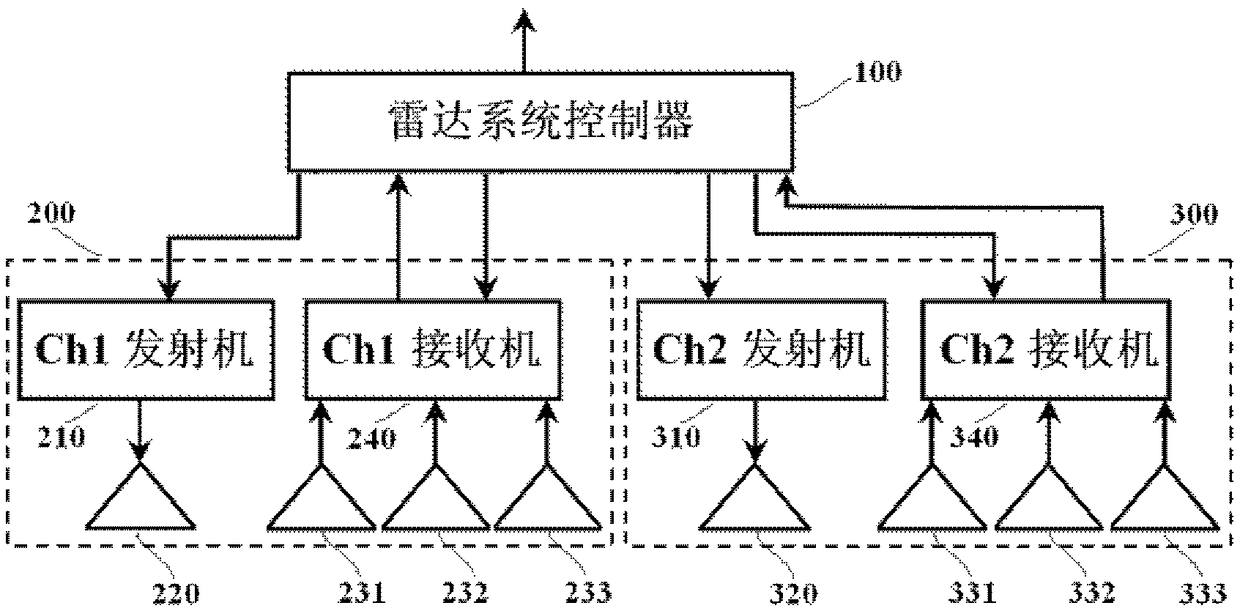Method and system for detecting extraterrestrial solid star structures using one-shot, multiple-receive radar
A ground-based, solid-state technology, applied in electromagnetic wave detection, radio wave measurement systems, measurement devices, etc., can solve the problem of narrow working bandwidth, inability to detect lunar or mars soil layered structure and soil thickness distribution, and low resolution of detection results and other problems, to achieve the effect of wide operating frequency, light weight and high detection resolution
- Summary
- Abstract
- Description
- Claims
- Application Information
AI Technical Summary
Problems solved by technology
Method used
Image
Examples
no. 1 example
[0038] In a first exemplary embodiment of the present invention, a method for detecting geological structures of the moon using a three-pitch radar technique is provided. The method is based on four ultra-broadband antenna units forming an antenna array for sending and receiving three times, that is, the antenna array includes a transmitting wire and three receiving antennas.
[0039] figure 1 It is a flow chart of a method for detecting lunar geological structures using the one-send-three-receive radar technology according to the first embodiment of the present invention. figure 2 for figure 1 Schematic diagram of the reflection and refraction lines of radar waves in the lunar vacuum and the first geological layer in the method shown. Please refer to figure 1 and figure 2 In this embodiment, the method for detecting the geological structure of the moon using the one-shot and three-receive radar technology includes:
[0040] Step S102: Transmitting antenna T 1 Sending ...
PUM
 Login to View More
Login to View More Abstract
Description
Claims
Application Information
 Login to View More
Login to View More - R&D
- Intellectual Property
- Life Sciences
- Materials
- Tech Scout
- Unparalleled Data Quality
- Higher Quality Content
- 60% Fewer Hallucinations
Browse by: Latest US Patents, China's latest patents, Technical Efficacy Thesaurus, Application Domain, Technology Topic, Popular Technical Reports.
© 2025 PatSnap. All rights reserved.Legal|Privacy policy|Modern Slavery Act Transparency Statement|Sitemap|About US| Contact US: help@patsnap.com



